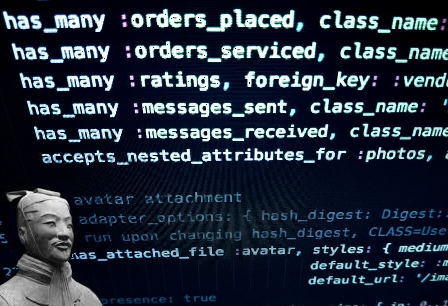Stroll into any mid-range hotel with a flash drive in your pocket. Don’t bother with the old desktop computer in the lobby “business center.” Stop at the front desk, smile wide, and slap your USB device on the counter. Politely ask the guest services agent to print a document for you. If they direct you to the business center, claim that you tried it the previous night and couldn’t get it to work. Then observe.
Congratulations, you just slipped past the perimeter defense of a multi-billion dollar corporation. Let me lay out what happens next. The front desk staff takes your flash drive to the back, pops it into a USB port, and joyfully opens whatever file you ask them to.
I know this trick works because I’ve witnessed the scenario play out a thousand times. In a few instances, I was the unwitting hand guiding the thumb drive into a terminal. While most Firewalls.com blog posts shy away from anecdotes and keep individual histories at a professional arm’s length, this post is based on personal experience.
I worked in the hospitality industry for half a decade before shifting into the info sec market. This is what I learned.
Corporate Will Do the Leg Work for You
Okay, getting a file onto a machine was easy, but you’ve only infected a single computer on a closed network. Now what? Wait for corporate to do the heavy lifting.
Each night when the hotel audits their daily transactions, troves of data are gleaned from employee desktops and rolled up to the corporate servers for safe keeping. Your freeloading file needs only loiter on the network until about 2:00 or 3:00 in the morning, when corporate provides a free lift to the database where comprehensive financial data, transaction history, and confidential customer information for a multinational brand is stored.
Security Culture in 10 Minutes or Less
Hotel new hires typically sit through a series of training modules where the mainstays of employee on-boarding make their appearances: OSHA policy review, incident reporting, benefits programs, core values. If the brand is more forward-thinking, then somewhere in this hodgepodge of instructional videos is nestled the briefest touchpoint on cyber security.
Included in one training excursion I trudged through, the company splurged on commissioning Kevin Mitnick to narrate a nine-minute video on cyber crime. After a Spark Notes’ tier definition of social engineering, Kevin encourages new employees to address further email fraud questions to their direct supervisors.
Hoteliers Wear Many Hats, But None of Those are White Hats
Asking superiors for further information sounds reasonable, in a script. But I was a direct supervisor to over a dozen employees and was granted no special insight into preventing cyber crime. I was consistently preoccupied with expanding a repertoire of customer service, accounting, management, sales, payroll, quality control, HR, safety, facilities management, commercial kitchen, and plumbing skills. Hotel employees tend to be jacks of all trades at the expense of being even a journeyman in any specific talent. Specialists graduated away from the front lines quickly or were chased out when one of their duller skills failed to impress.
Perhaps further up the chain of command an answer could be uncovered? But my direct supervisor played audience to the very same training modules I watched. And his supervisors, now nearing the vice presidential or regional territory types, likely hadn’t seen a training video since before cyber crime was a credible threat. But surely further up the ladder, someone was watching over us. I’m certain that scouring LinkedIn or the company Outlook Address Book would inevitably turn up a VP of Technology or comparable title, but they were off in a lofty C-suite well outside the reach or even the zeitgeist of any ground-level employees looking for answers. For all intents and purposes, further information is impractical beyond utility if it exists at all.
Throwing the Baby Out With the Hogwash
An anecdote burned forever into my psyche involves an umbrella term that some corporate security wonk for one hotel brand took a liking to: hogwash. The term ‘hogwash’ and cyber security were married after an impassioned email in which the word was typed in bold font, in all capital letters, a total of 7 times. Several months later this diatribe lead to the introduction of a “hogwash button” on corporate email applications. At no point was it expounded exactly what ‘hogwash’ entailed or why reporting it proved crucial to company goals. The only instruction given was to delete and report any email that looked suspicious. The grounds for basing our suspicions, I suppose, were left to individual interpretation.
The Lesson to Be Learned
This is no simple attempt at picking on the hospitality industry. Instead, take this post as a wake-up slap. When discussing information security, there is a magnetic draw to discussing the healthcare industry, banking and financial institutions, or vulnerabilities haunting our governmental or infrastructure systems. But if we trot out the conversation to less flashy or FUD-inducing industries, we find a landscape brimming with entities just begging to be caught with their pants down. And while malware crashing the power grid makes for better thriller movie material, the hospitality industry still handles the confidential information of millions of travelers each day.
We must address the disconnect between security administrators in high towers and front-line employees operating in distant venues. Real human connections are necessary to impart the axioms of cyber security to ground level employees. This is personnel that doesn’t spend hours browsing Dark Reading or CNET.
Firewalls.com dedicates a lot of time and screen space to the cause of nurturing cyber security cultures in the office. We understand that even the most expensive and sophisticated security setup will fail if employees leave gateways wide open.
It’s time to revamp your library of training videos. It’s time to review SOPs with VPs who have occupied their positions since before the hazards of cyber crime fleshed out. It’s time to put cyber security on the same pedestals as accurate payroll, helpful customer service, and efficient logistics. And for the hotel industry in particular, it is time to leave the printing of boarding passes to airline kiosks.
Firewalls.com is a value-added reseller of firewall appliances & a vendor of managed security and Firewall-as-a-Service support. Our engineers are rigorously trained and certified by all of the major manufacturers that we partner with. Whether you’re looking to add an appliance to your security set-up or seek ongoing support from seasoned experts, we can provide the security solutions necessary to get you secure and keep you secure. Contact one of our knowledgeable sales staff to answer any questions you may have about your network, firewalls, or endpoint protection.













